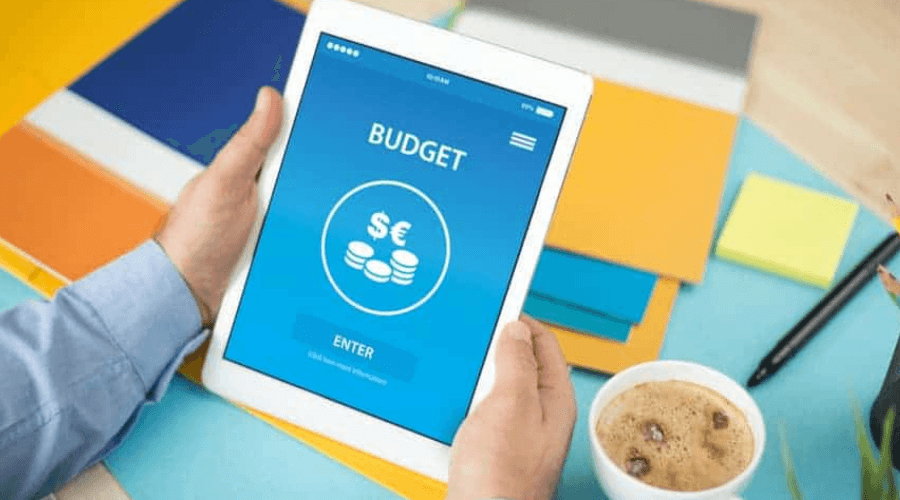In this guide, we’ll review some of the top personal finance apps that can transform how you manage your budget — making saving, spending, and investing simpler than ever.
1. Why You Should Use Budgeting Apps
Traditional budgeting using spreadsheets or notebooks can be time-consuming and inefficient. Budgeting apps automate the process, syncing directly with your bank accounts, credit cards, and investments to give you real-time insights into your financial health.
According to CNBC Select, using budgeting apps helps users save up to 20% more annually by tracking spending and identifying unnecessary expenses. These apps also encourage accountability by sending reminders when bills are due or budgets are exceeded.
From beginners looking to get organized to advanced users managing multiple accounts, there’s a personal finance app for every need and lifestyle. Let’s explore some of the best tools available today.
2. Mint: The All-in-One Budgeting Powerhouse
Mint by Intuit is one of the most popular budgeting apps on the market — and for good reason. It offers a complete financial overview, automatically categorizing your expenses and tracking your cash flow in real time. With Mint, you can link multiple accounts to monitor everything from checking and savings to investments and loans in one place.
One of Mint’s strongest features is its goal-setting tool. You can create custom goals for saving, debt payoff, or large purchases, and the app provides recommendations based on your financial habits. It also tracks your credit score for free, giving you an added layer of financial insight.
Mint is free to use, supported by ads, and available on both iOS and Android. For beginners, it’s one of the easiest money-saving tools to get started with.
Learn how to align Mint with your savings goals by reading our post on Creating a Personal Finance Plan (example.com).
3. YNAB (You Need A Budget): The Proactive Approach
YNAB — short for You Need A Budget — takes a unique, proactive approach to personal finance. Instead of simply tracking where your money goes, YNAB helps you decide where every dollar should go before you spend it. This forward-thinking strategy encourages intentional budgeting and prioritization.
According to YNAB’s official site, the average user saves over $6,000 in their first year. The app integrates with major banks, offering a clear picture of your accounts, debts, and goals. You can also create custom categories — such as groceries, rent, or entertainment — to match your personal budget style.
YNAB isn’t free (it costs around $14.99/month), but many users find it worth the price due to its powerful financial coaching and hands-on approach. It’s ideal for people serious about long-term financial discipline.
For advanced budgeting insights, explore Investopedia’s guide to personal finance.
4. PocketGuard: Simplify Your Daily Spending
If you prefer simplicity, PocketGuard is one of the best money-saving tools to manage day-to-day expenses. This app connects to your financial accounts, calculates your bills and necessities, and shows how much “safe-to-spend” money remains.
The beauty of PocketGuard lies in its straightforward dashboard. You’ll see all your spending categories at a glance, helping you avoid overspending. It also automatically detects recurring subscriptions — like Netflix or Spotify — so you can cancel unused services and save more each month.
PocketGuard offers a free version and a premium plan for advanced features, such as custom categories and goal tracking. It’s perfect for people looking to gain quick control of their spending habits.
According to Forbes Advisor, PocketGuard’s “In My Pocket” feature is one of the most user-friendly ways to track real-time spending.
5. Goodbudget: Great for Couples and Shared Finances
Goodbudget uses the envelope budgeting system, a classic approach where you allocate funds into categories (or “envelopes”) for specific purposes — like rent, food, or entertainment. The app digitizes this concept, allowing you and your partner to track shared expenses and budgets collaboratively.
Goodbudget is ideal for families and couples looking for transparent money management. It doesn’t require bank syncing, which makes it more secure for users who prefer manual data entry. You can access your budget across multiple devices, making it easy to coordinate spending decisions in real time.
With both free and paid versions, Goodbudget provides flexibility for users at different financial stages. Its visual breakdowns and reports make it easy to see where every dollar is going, making it one of the top personal finance apps for households.
To understand how envelope budgeting works, check out The Balance’s guide to envelope budgeting.
6. Empower (Formerly Personal Capital): For Investors and Savers
If you’re looking for an app that blends budgeting with wealth management, Empower (previously known as Personal Capital) is a fantastic choice. This app tracks your spending, investments, and net worth — all in one interface. It’s not just a budgeting app but a comprehensive financial dashboard.
Empower provides advanced analytics, such as retirement planning and investment performance comparisons. You can easily see how your portfolio stacks up against major indexes. For long-term savers, it’s a great way to balance short-term budgeting with long-term growth goals.
Best of all, Empower offers free budgeting tools alongside optional paid advisory services for users seeking professional guidance. It’s ideal for individuals who want to connect daily budgeting with bigger-picture wealth management.
For a closer look at wealth-building strategies, read our post on Smart Investing for Beginners (example.com).
7. Fudget: Simple, Offline, and Effective
Not everyone needs fancy integrations or analytics. Fudget is one of the simplest budgeting apps designed for users who prefer an offline experience. You manually input your income and expenses, and the app calculates your remaining balance — no bank connections required.
Fudget’s minimalist interface is perfect for users who want to focus purely on budgeting without distractions. It’s lightweight, free to use, and works seamlessly on both mobile and desktop devices.
This app is particularly useful for freelancers, students, or anyone tracking temporary budgets, such as travel expenses or special projects.
According to TechRadar, Fudget stands out as a great option for those valuing simplicity and control in personal budgeting.
8. Honeydue: The Best App for Couples
Honeydue is specifically designed for couples managing shared expenses. It allows both partners to track income, bills, and spending habits in one place, promoting transparency and financial collaboration.
You can comment on specific transactions, set shared goals, and receive bill reminders — making communication around money easier and less stressful. The app also offers customizable privacy settings, so you can choose what your partner sees.
With over 1 million users, Honeydue has been featured by outlets like The New York Times for its user-friendly interface and commitment to financial wellness for couples.
Honeydue is a free, ad-supported app available on both iOS and Android, making it an excellent addition to your money-saving tools arsenal.
9. How to Choose the Right Budgeting App for You
Choosing the best personal finance app depends on your financial goals, lifestyle, and level of experience. Here’s what to consider:
- Automation: Do you want the app to sync automatically with your accounts, or do you prefer manual control?
- Goals: Are you focused on debt repayment, saving, or investing?
- Cost: Some apps are free, while others require monthly subscriptions.
- Privacy: Check security measures and whether your data is shared with third parties.
Ultimately, the best app is the one you’ll actually use consistently. Many offer free trials, so test a few to see which fits your style best.
For a balanced financial toolkit, combine budgeting apps with investment platforms like Robinhood or Wealthfront to manage both spending and saving effectively.
10. Final Thoughts: Take Control of Your Money Today
In today’s fast-paced world, financial control starts with awareness — and the right budgeting apps make that easier than ever. Whether you need a full financial dashboard like Mint or Empower, or a minimalist tool like Fudget, there’s something for everyone.
By integrating money-saving tools into your routine, you can track spending, reduce waste, and achieve your financial goals faster. Remember, success in budgeting isn’t about perfection — it’s about consistency and smart decision-making.
Start small, stay disciplined, and let technology help you achieve the financial freedom you deserve.




